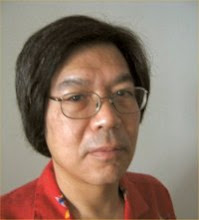On August 29, 2016, the Film Society of Lincoln Center sent out a press release, announcing a new section of the New York Film Festival. This section was going to be called "Explorations," and the release stated, "Explorations is devoted to work from around the world, from filmmakers across the spectrum of experience and artistic sensibility. Some films are delicate, others more forceful; some are contemplative and some dive directly into the heart of their material. The one quality that they share is that they are adventurous and exploratory, in the very best sense of the word." There were six films announced for the section, Albert Serra's "La Mort de Louis XIV," Natalia Almada's "Todo lo demas," Douglas Gordon's "I Had Nowhere to Go," Gaston Solnicki's "Kekszakallu," Oliver Laxe's "Mimosas," and Joao Pedro Rodrigues' "The Ornithologist."
Douglas Gordon, of course, is an artist whose media works have often commented on film history, as in his "24 Hour Psycho" in which Alfred Hitchcock's film is scrutinized in super-slow-motion and blown up as an immersive environment; in "I Had Nowhere to Go," Gordon creates a portrait of Jonas Mekas, the singular spokesman for avantgarde cinema in the US, but focusing on his diaries from 1943 to 1949, in the period when he began his displacement from his Lithuanian home to his adjustment to living in Brooklyn. The soundtrack has Mekas reading from his diaries; for much of the film, the screen is dark, though there are flashes of images at certain moments, such as the beginning with a brief glimpse of Mekas in close-up. But the power of Mekas's words, and the vivid descriptions of his ordeals are compelling enough; the continuity of hearing this testimonial creates a theatrical experience which animates the darkness of the theatrical setting. And the poignancy of hearing a first-hand account of the refugee experience is particularly appropriate at this historical moment.
When the Explorations section was announced, and Douglas Gordon's cinematic portrait of Jonas Mekas was included, i was reminded of the very early days of the New York Film Festival. By chance, when i received the press release, i happened to find a book, "The New American Cinema: A Critical Anthology edited by Gregory Battcock," published by Dutton in 1967. Actually, what happened was that my nephew called, to tell me that he and his wife were cleaning out their apartment, and he was getting rid of some of the books which i had given him starting in high school, when he expressed an interest in movies. And "The New American Cinema" was one of those books. (My own copy of that book is hidden away somewhere.) So i went and picked up some of the books. In "The New American Cinema," i found that several essays address the situation of the avantgarde cinema in relation to the New York Film Festival. The reason for this goes back to the founding of the festival: Amos and Marcia Vogel had been the directors of Cinema 16, which had been a film-club in New York City which showed "independent" films, avantgarde films as well as documentaries, and foreign films which had not found commercial distribution in the United States. Additionally, Cinema 16 served as a distributor for these films to film clubs and university film societies across the country. So when Amos Vogel decided to close Cinema 16, there was a hole left in the exhibition and distribution possibilities for avantgarde films; what Vogel did (in collaboration with Richard Roud) was to start the New York Film Festival, and so many of the filmmakers who had previously been served by Cinema 16 felt abandoned. Was there a place for avantgarde film within the structure of the New York Film Festival, with its screenings held in the grand precepts of Lincoln Center's Philharmonic Hall? This is a question which has remained unanswered, though there was the inclusion of the section "Views From the Avant-Garde" (now retitled "Projections"), and now, there is "Explorations" as another section to further the presentation of more experimental approaches to cinema.
But this year, i made the effort to see as many films as possible; attending the press screenings, i was able to see 45 films in all, with at least three films seen in every section. (The sections of the New York Film Festival are: Main Slate; Special Events; Film Comment Presents; Revivals; Spotlight on Documentary; Retrospective; Explorations; Projections; Convergence.) This was, in fact, one of the best festivals in a long time. And i'll be writing more in the next few days.


0 Comments:
Post a Comment
<< Home